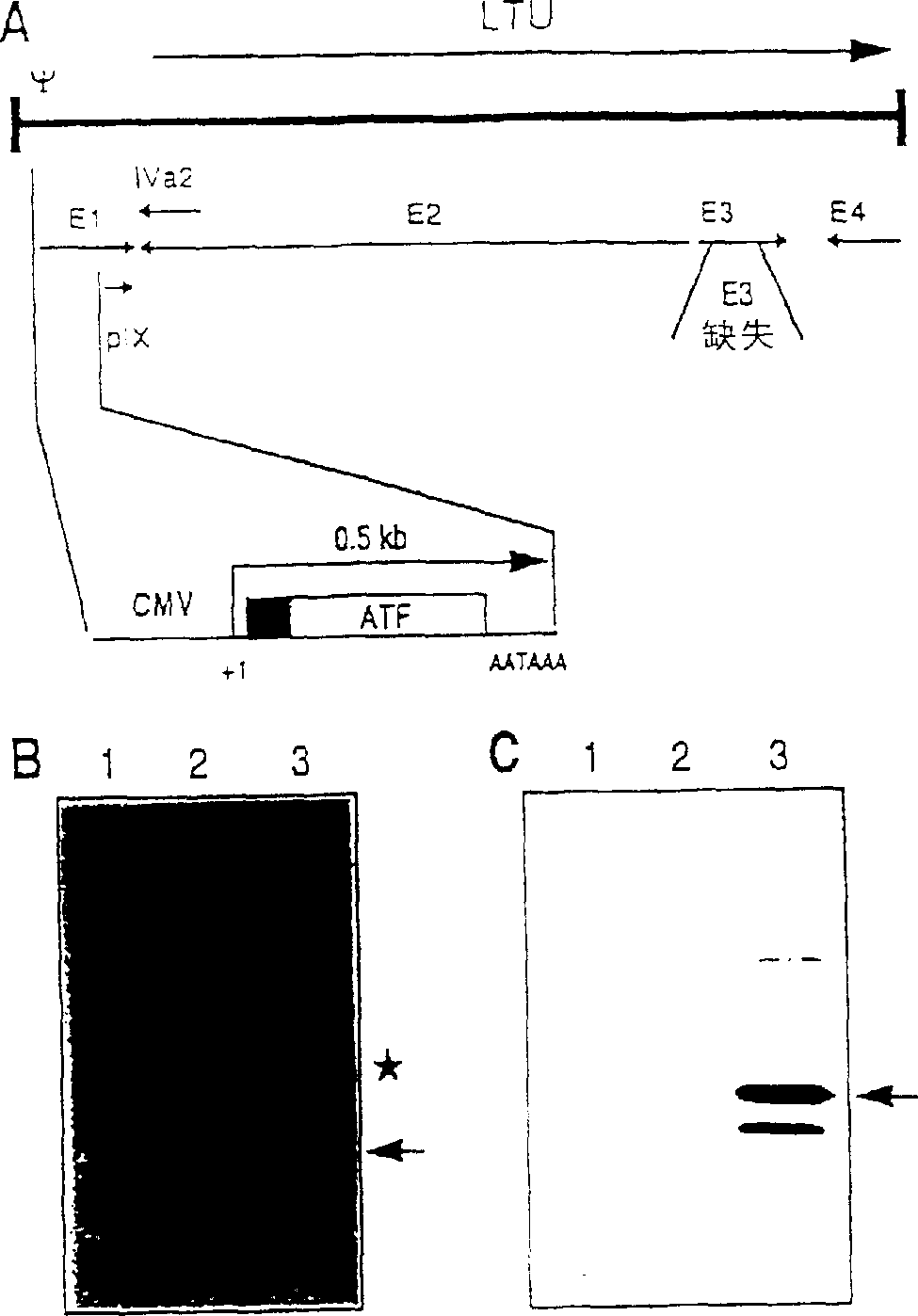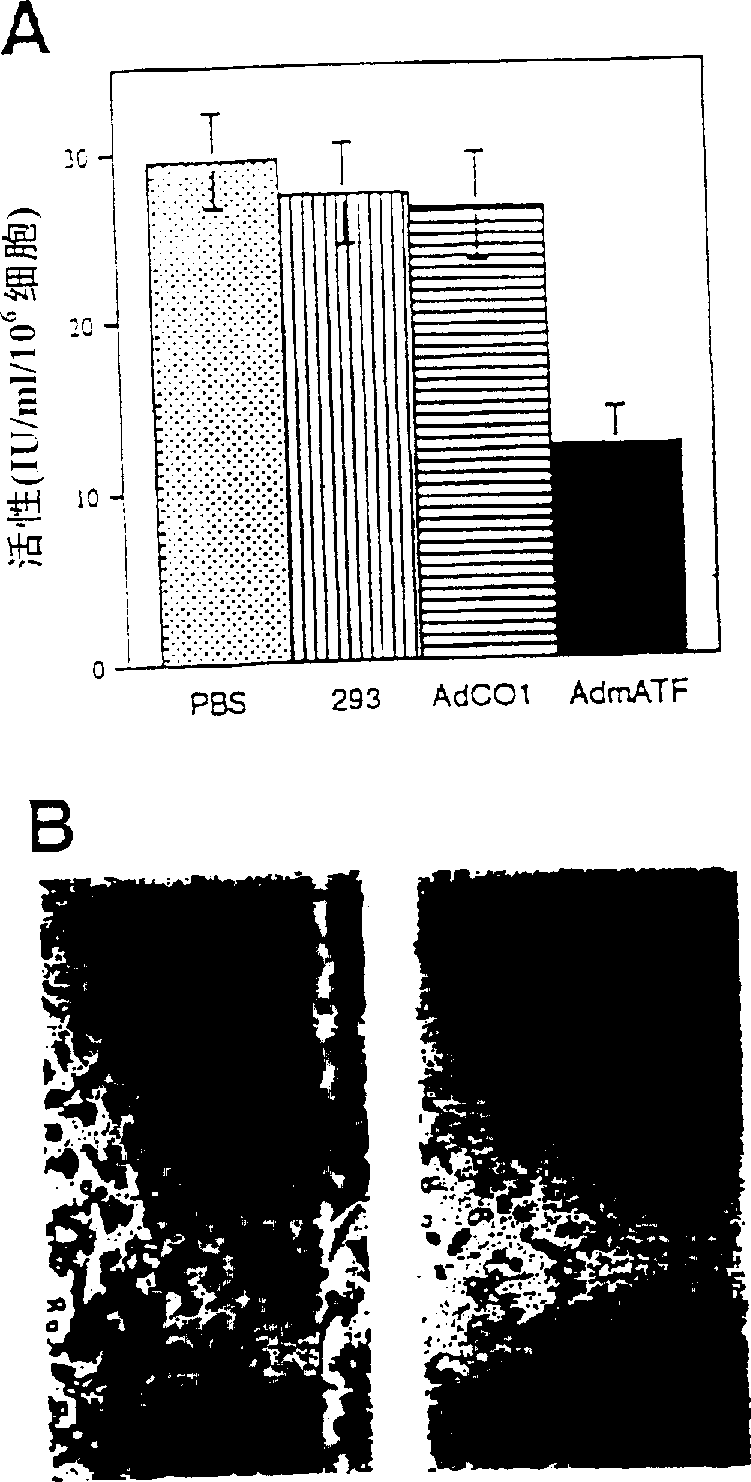Adneovirus-mediated intratumoral delivery of angiogenesis antagonist for treatment of tumors
An anti-angiogenesis and adenovirus technology, which is applied in the field of gene therapy for tumor treatment, can solve problems such as troublesome and expensive recombinant protein input
- Summary
- Abstract
- Description
- Claims
- Application Information
AI Technical Summary
Problems solved by technology
Method used
Image
Examples
Embodiment 1
[0122] Example 1: Gene therapy using ATF inhibits tumor growth and metastasis
[0123] Example 1 demonstrates that expression of the uPA / uPAR antagonist ATF (amino-terminal fragment of urokinase) inhibits tumor growth and metastasis. A defective adenovirus (AdmATF) expressing mouse ATF from CMV promoter was constructed. A single intratumoral injection of AdmATF inhibited the growth of established tumors and delayed tumor dissemination in two different mouse models. These effects were associated with a marked inhibition of neovascularization within and in the immediate vicinity of the injection site. The magnitude of this effect is evident in the ability of mouse ATF to inhibit angiogenesis in human tumors.
[0124] method
[0125] Recombinant adenovirus. AdmATF is an E1-deficient recombinant adenovirus expressing the mouse ATF gene from a CMV promoter. Plasmid pDB151916 was used as starting material to introduce a stop codon after residue 135 of ...
Embodiment 2
[0145] Example 2: In vivo angiostatin gene therapy inhibits tumors
[0146] Example 2 demonstrates that expression of the amino-terminal fragment of human plasminogen (angiostatin K3) inhibits tumor growth in vivo by blocking endothelial cell proliferation associated with mitotic arrest. The antitumor effect following local delivery of the N-terminal fragment of human plasminogen (angiostatin K3) has been studied in 2 xenograft mouse models. Angiostatin transfer was achieved by a defective adenovirus (AdK3) expressing the secretory angiostatin K3 molecule from the CMV promoter. In in vitro studies, AdK3 selectively inhibits endothelial cell proliferation and interferes with M-phase promoter-induced G2 / M transition. AdK3-infected endothelial cells exhibit a pronounced mitotic arrest associated with downregulation of M-phase phosphoproteins. Significant tumor growth arrest following a single intratumoral injection of AdK3 into pre-established rat C6 glioma or human MDA-M...
PUM
 Login to View More
Login to View More Abstract
Description
Claims
Application Information
 Login to View More
Login to View More - R&D
- Intellectual Property
- Life Sciences
- Materials
- Tech Scout
- Unparalleled Data Quality
- Higher Quality Content
- 60% Fewer Hallucinations
Browse by: Latest US Patents, China's latest patents, Technical Efficacy Thesaurus, Application Domain, Technology Topic, Popular Technical Reports.
© 2025 PatSnap. All rights reserved.Legal|Privacy policy|Modern Slavery Act Transparency Statement|Sitemap|About US| Contact US: help@patsnap.com



